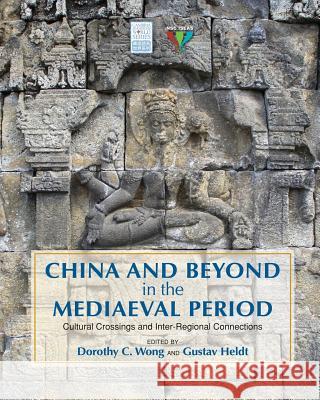China and Beyond in the Mediaeval Period: Cultural Crossings and Inter-Regional Connections » książka
China and Beyond in the Mediaeval Period: Cultural Crossings and Inter-Regional Connections
ISBN-13: 9781604978568 / Angielski / Twarda / 2014 / 444 str.
China and Beyond in the Mediaeval Period: Cultural Crossings and Inter-Regional Connections
ISBN-13: 9781604978568 / Angielski / Twarda / 2014 / 444 str.
(netto: 405,40 VAT: 5%)
Najniższa cena z 30 dni: 424,49
ok. 16-18 dni roboczych
Dostawa w 2026 r.
Darmowa dostawa!
This book illuminates various aspects of the spread of Buddhism from its Indian homeland to China and beyond during the first through tenth centuries. The coverage is amazingly broad, ranging from maritime aspects of the propagation of Buddhism to movements of peoples and ideas along the Central Asian desert Silk Roads, from "barbarian" dress to the Hellenistic roots of the astrolabe, and many other interesting topics besides. Scholarly disciplines and fields represented include history, history of art, religious studies, history of science, literature, economic history, astronomy, and others. Taken all together, these detailed investigations on a wide variety of subjects constitute a major breakthrough in cultural history and Buddhist Studies. Among the paradigms that have been questioned, refined, or overturned in this volume are those of centre and periphery, barbarian and civilized, literate and illiterate, and nation and culture. The result is a book which provides a more nuanced understanding of the ways in which peoples interacted through networks of contact and exchange during the mediaeval period. Particularly refreshing is the adoption in this volume of the notion of Eurasia as an integral ecumene of economic and cultural interaction. The special attention paid to women in this volume, including diplomats and rulers, is unusual, and redresses the balance of male dominance that has hitherto plagued both scholarship and society.











